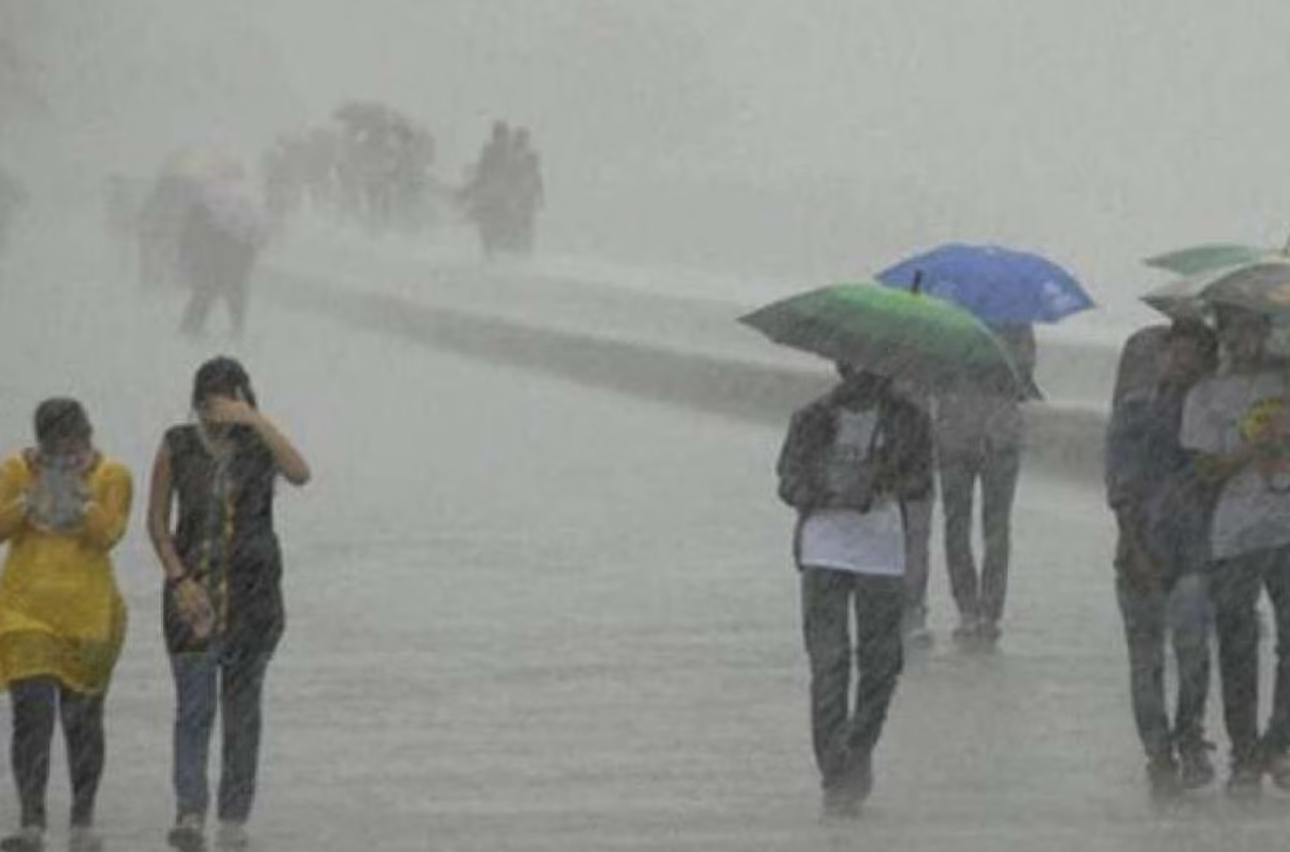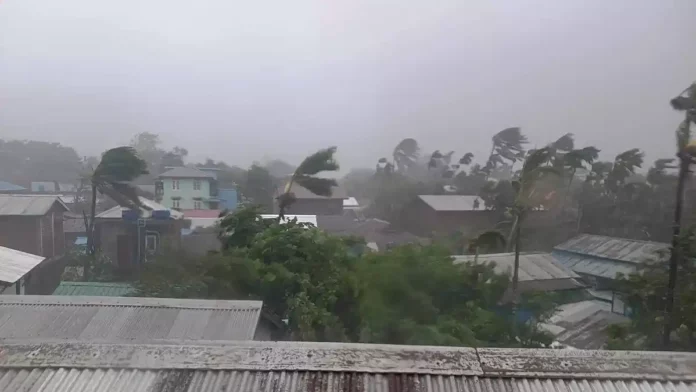Cyclone Mocha, an extremely severe cyclonic storm, made a ferocious landfall near Lat 20.5N and Lon 92.9E on May 14, wreaking havoc along the coastlines of Bangladesh and Myanmar. With wind speeds reaching a staggering 195 kmph, the category five storm unleashed heavy rain and unleashed high-velocity winds, leaving a trail of destruction in its wake. This article delves into the impact of Cyclone Mocha, highlighting the measures taken by the respective governments, the challenges faced by affected regions, and the immediate relief efforts underway.

The Landfall
On May 14, between 12:30-14:30 IST, Cyclone Mocha made landfall approximately 40 km north of Sittwe in Myanmar and 145 km southeast of Cox’s Bazar in Bangladesh. The India Meteorological Department (IMD) reported the storm’s landfall, emphasizing its extreme severity and the imminent threats it posed to the affected areas. However, the IMD also noted that the cyclone was gradually weakening, predicted to diminish into a very severe cyclonic storm within the next three hours following landfall.
Bangladesh’s Preparedness and Response
In anticipation of the cyclone’s arrival, the government of Bangladesh took swift action to mitigate potential risks and safeguard its citizens. Prime Minister Sheikh Hasina assumed a hands-on approach, closely monitoring the situation and providing directives to tackle the impending disaster. The efforts were coordinated under the supervision of Awami League General Secretary Obaidul Quader, who ensured that the necessary measures were implemented promptly.
As a precautionary measure, gas supply from two floating LNG terminals was suspended to minimize the risk of accidents or explosions. Additionally, recognizing the significance of education and the safety of students, the authorities decided to postpone the Secondary School Certificate (SSC) exam scheduled for Monday, acknowledging the need to prioritize the well-being of students in the face of Cyclone Mocha.

Myanmar’s Encounter with the Cyclone
The coastal region of Sittwe in Myanmar bore the brunt of Cyclone Mocha’s fury. The impact was swift and severe, leading to disruptions in electricity and Wi-Fi connections. With communication networks crippled, the affected residents faced additional challenges in reaching out for assistance and relaying distress calls. Rescue teams stationed in Sittwe reported an influx of emergency calls from individuals trapped by flooding, emphasizing the urgent need for relief operations.
Challenges Faced and Relief Efforts
Cyclone Mocha’s onslaught triggered a series of challenges for the affected regions, including the risk of landslides, infrastructure damage, and displacement of residents. The government of Bangladesh promptly issued a landslide warning, anticipating the heavy rainfall that was predicted to persist. This advisory aimed to safeguard vulnerable areas and mitigate the potential loss of lives caused by landslides.
Immediate relief efforts were initiated by the respective governments, aid organizations, and local communities. Search and rescue teams were deployed to the affected regions to evacuate stranded individuals and provide necessary assistance. The focus was on ensuring the safety and well-being of the affected population, with priority given to the provision of shelter, food, clean water, and medical aid. Government agencies and non-governmental organizations worked in tandem to restore essential services and facilitate the return to normalcy.
Impact on Northeast India
Cyclone Mocha’s influence extended beyond the immediate coastal regions, with heavy to very heavy showers forecasted over Northeast India, particularly in the N.M.M.T area until May 15. This region, already prone to monsoonal rains, experienced exacerbated weather conditions due to the cyclonic disturbance. The authorities in India prepared for the deluge, mobilizing resources to mitigate potential flooding, landslides, and other associated risks. Evacuation plans were put into action, and relief centers were established to accommodate those affected by the inclement weather.
The Importance of Preparedness
The impact of Cyclone Mocha serves as a stark reminder of the importance of preparedness in the face of natural disasters. Bangladesh and Myanmar, situated in a geographically vulnerable region, are no strangers to cyclones and their devastating consequences. Over the years, both countries have made significant strides in enhancing their disaster preparedness and response mechanisms.

Early warning systems, such as those implemented by the IMD and local meteorological departments, played a crucial role in alerting the population about the approaching cyclone. These systems enabled authorities to issue timely advisories and evacuation orders, giving residents an opportunity to seek safer ground and minimize potential casualties. The coordination between government agencies, community organizations, and international humanitarian entities further facilitated effective response and relief efforts.
However, despite these measures, the scale of the destruction caused by Cyclone Mocha underscores the need for continuous improvement in disaster management strategies. This includes bolstering infrastructure resilience, ensuring access to vital services during emergencies, and enhancing community awareness and preparedness. By investing in long-term solutions, countries can better mitigate the impact of future cyclones and protect the lives and livelihoods of their citizens.
Climate Change and Cyclones
The intensification of cyclones and their increasing frequency in recent years have raised concerns about the role of climate change in shaping extreme weather events. While it is difficult to attribute a single cyclone solely to climate change, scientific studies suggest that rising sea surface temperatures and changing atmospheric conditions contribute to the intensification of storms.
The warming of oceans provides energy for cyclones, fueling their growth and strengthening their destructive potential. Moreover, the rising sea levels increase the vulnerability of coastal regions to storm surges and flooding. These climate-related factors accentuate the risks associated with cyclones, making it imperative for countries to address climate change and implement sustainable measures to mitigate its effects.
International Cooperation and Assistance
The impact of Cyclone Mocha emphasizes the importance of international cooperation and assistance in times of crisis. Recognizing the magnitude of the disaster, the international community has extended support to Bangladesh and Myanmar, offering humanitarian aid, technical expertise, and financial resources to aid in the recovery and reconstruction efforts.
Regional organizations, such as the South Asian Association for Regional Cooperation (SAARC), have a crucial role to play in facilitating cooperation and coordination among member states during times of natural disasters. By sharing resources, expertise, and best practices, countries in the region can collectively address the challenges posed by cyclones and build resilient communities.
Conclusion
Cyclone Mocha’s landfall in Bangladesh and Myanmar has left a devastating impact on the coastal regions, causing widespread destruction and disruption. The governments of both countries, alongside international organizations, have swiftly responded to the crisis, prioritizing the safety and well-being of affected communities. Immediate relief efforts have been initiated, focusing on rescue operations, provision of essential services, and rehabilitation.
The event serves as a reminder of the significance of disaster preparedness, climate change adaptation, and international collaboration in mitigating the impact of cyclones. As the affected regions embark on the path to recovery, it is crucial to integrate lessons learned from this calamity into future planning and development, fostering resilience and ensuring the well-being of vulnerable populations. Through collective efforts and sustainable measures, societies can overcome the challenges posed by cyclones and build a safer, more resilient future.


